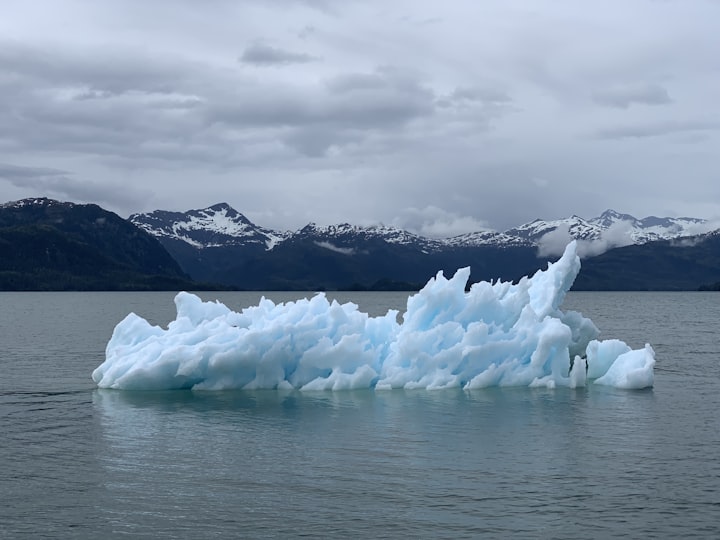The Impact of Climate Change on Biodiversity and Ecosystem Services
The Impact of Climate Change on Biodiversity and Ecosystem Services

Climate change is a pervasive and growing global threat to biodiversity and ecosystem services. However, developing appropriate adaptation plans can be challenging because species, populations, and even entire ecosystems may respond to climatic changes in different ways. This article aims to provide a comprehensive overview of the impact of climate change on biodiversity and ecosystem services, based on the latest scientific evidence and case studies from around the world.
Biodiversity refers to the variety of life on Earth, including genes, species, and ecosystems. Ecosystem services are the benefits that people obtain from nature, such as food, water, pollination, carbon sequestration, and cultural values. Biodiversity and ecosystem services are interdependent: biodiversity supports the provision of ecosystem services, and ecosystem services enhance biodiversity conservation. For example, diverse plant communities can enhance soil fertility, water quality, and pest control, while also providing habitat for wildlife and genetic resources for agriculture and medicine.
Climate change affects biodiversity and ecosystem services in multiple ways. First, it alters the physical and chemical conditions of the environment, such as temperature, precipitation, sea level, ocean acidity, and frequency of extreme events. These changes can affect the physiology, phenology, behavior, distribution, and interactions of species, as well as the structure and function of ecosystems. For instance, warming temperatures can induce shifts in flowering and migration times, reduce snow cover and ice extent, increase droughts and wildfires, and expand the range of invasive species and pathogens. Second, climate change can exacerbate other drivers of biodiversity loss, such as habitat fragmentation, overexploitation, pollution, and land use change. These drivers can reduce the adaptive capacity of species and ecosystems to cope with climatic stressors. Third, climate change can have feedback effects on the climate system through changes in biogeochemical cycles and albedo. For example, deforestation can reduce carbon storage and increase greenhouse gas emissions, while also decreasing evapotranspiration and cloud formation.
The impact of climate change on biodiversity and ecosystem services varies across regions, ecosystems, and taxa. Some regions are more vulnerable than others due to their exposure to climatic changes, their sensitivity to those changes, and their ability to adapt. For example, polar regions are experiencing rapid warming and melting of ice sheets and glaciers, which threatens the survival of species such as polar bears and penguins. Tropical regions are facing increased heat stress and droughts, which affects the productivity and diversity of tropical forests and coral reefs. Mountain regions are experiencing shifts in elevation zones and loss of snowpacks,
which alters the hydrology and biodiversity of mountain ecosystems.
Some ecosystems are more resilient than others due to their inherent characteristics or management practices. For example, wetlands can buffer against floods and storms by storing water and reducing erosion. Grasslands can sequester carbon by increasing soil organic matter and root biomass. Agroforestry systems can enhance biodiversity by mimicking natural forest structures and functions. Some species are more adaptable than others due to their genetic diversity, phenotypic plasticity, dispersal ability, and evolutionary potential. For example, some plants can adjust their photosynthesis and transpiration rates to cope with water stress. Some animals can alter their diet and behavior to exploit new resources. Some microorganisms can evolve rapidly to tolerate changing conditions.
The impact of climate change on biodiversity and ecosystem services has significant implications for human well-being and sustainable development.
Biodiversity and ecosystem services support many aspects of human health, livelihoods, culture, and security. For example, biodiversity and ecosystem services provide food security by ensuring crop diversity, pollination, pest control, and soil fertility.
They provide water security by regulating water quantity, quality, and timing. They provide energy security by supplying biomass, hydropower, and biofuels. They provide disaster risk reduction by mitigating floods, landslides, coastal erosion, and storm surges.
They provide cultural services by enhancing aesthetic, spiritual, educational, and recreational values. However, climate change can undermine these benefits by reducing the availability, accessibility, and quality of biodiversity and ecosystem services. For example, climate change can reduce crop yields by increasing heat stress, droughts, floods, and pests.
It can reduce water availability by altering precipitation patterns, snowmelt, and runoff. It can reduce energy production by affecting biomass growth, water flow, and biofuel potential. It can increase disaster risk by intensifying extreme events, sea level rise, and coastal inundation. It can reduce cultural values by affecting the beauty, diversity, and heritage of natural landscapes.
Therefore, it is essential to take urgent and coordinated actions to address the impact of climate change on biodiversity and ecosystem services.
These actions include mitigation, adaptation, and transformation. Mitigation refers to reducing greenhouse gas emissions by enhancing carbon sinks and reducing carbon sources.
Adaptation refers to increasing the resilience of biodiversity and ecosystem services to climatic changes by reducing other drivers of biodiversity loss, restoring degraded ecosystems, and promoting sustainable management practices. Transformation refers to changing the underlying drivers of biodiversity loss and climate change by shifting values, behaviors, institutions, and governance systems. This article has provided a brief overview of the impact of climate
About the Creator
Ameer Muavia
I turn words into magic: As a content writer, I have a way with words that brings your brand to life. Let's make some magic together.






Comments
There are no comments for this story
Be the first to respond and start the conversation.